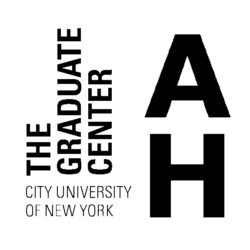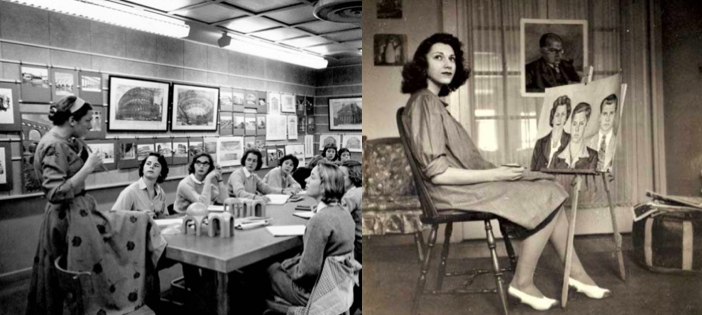We are saddened by the recent deaths of Linda Nochlin and Jacqueline Barnitz: groundbreaking art historians whose research, writing, and teaching made transformative contributions to the field. Both women leave behind powerful and progressive legacies on their respective areas and on the overall discipline of art history, which has benefited immeasurably from their scholarship on art by women and from the Global South.
Dr. Barnitz passed away Saturday morning, October 28, at age 93. Born in 1924, she attended CUNY Graduate Center and earned her PhD with a dissertation on the Argentinean avant-garde publication Martin Fierro. Barnitz was an an internationally renowned scholar of Latin American art foundational figure in the field. In 1981, she joined the faculty of the University of Texas, becoming the first scholar to hold a tenure-track university position dedicated to modern Latin American art. Her 2001 book Twentieth-Century Art of Latin America (republished in an expanded edition with Patrick Frank 2015) was the first text to comprehensively chart the history of modern and contemporary art in the region. Below is an excerpt from a tribute to Dr. Barnitz from the Center for Latin American Visual Studies, UT Austin.
…Born in Geneva in 1924, Jacqueline Essery Korkegi spent her childhood in various parts of Switzerland and Italy. From ages ten to seventeen, she and her family lived in Brussels. In 1941 a family vacation to southern France suddenly turned into an escape from German occupation. She and her family eventually found passage by ship to the United States and resettled in New York. Trained as a portrait painter, she eventually abandoned portraiture in favor of experiments with abstract expressionism. She was briefly married to Walter Downing Barnitz and kept the name for professional reasons after their separation.
In New York, Jacqueline continually sought out the company of artists, poets, and intellectuals and became interested in Latin America when she noted that many artists from the region had moved to the city, often staying after receiving fellowships. A 1962 trip to Argentina exposed her to a dynamic artistic scene in Buenos Aires. Determined to give Latin America further study and visibility, she began writing for art journals, providing specialized reporting through articles, interviews, and reviews for Arts Magazine and other publications. She befriended many Latin American artists in New York in the 1960s and 1970s, particularly those escaping political unrest in their home countries, such as Brazilian artists Rubens Gerchman and Hélio Oiticica. In 1969 she began teaching courses on Latin American art at the State University of New York at Stony Brook and, subsequently, decided to pursue a graduate degree in the subject. She attended CUNY Graduate Center and earned her PhD with a dissertation on the Argentinean avant-garde publication Martin Fierro.
In 1981 Jacqueline joined the art history faculty of the University of Texas at Austin, where she taught until her retirement in 2007. Through that appointment, she became the first to hold a tenure-track university position dedicated to the subject of modern Latin American art. Her research—the result of her traveling systematically through South America and Mexico since the 1960s—is collected in Twentieth-Century Art of Latin America (2001), the first text to comprehensively chart the history of modern and contemporary art from the region. Published in an expanded edition in collaboration with Patrick Frank in 2015, her textbook continues to be used in most universities teaching Latin American art.
A passionate teacher, Jacqueline was devoted to her students and dedicated her textbook to them. Today the field of modern Latin American art is populated by her former students, who hold tenured positions and curatorships as well as work as independent researchers in the US and internationally. She was also a much beloved colleague and friend who will be missed by all who knew her.
Memorial contributions may be made to the Jacqueline Barnitz Graduate Endowment in Art History in the Department of Art and Art History, The University of Texas at Austin, to support student research in the field of Latin American art. Please mail to Sondra Lomax, College of Fine Arts, UT-Austin, 2305 Trinity Street, D1400, Austin, TX, 78712. Her former students are compiling written and short video remembrances from colleagues, friends, and students to share and to archive. If you wish to contribute, please write to jbarnitz.memories@gmail.com.
On Sunday, October 29, the pioneering feminist art historian Linda Nochlin passed away. Published in January 1971, Nochlin’s essay, “Why Have There Been No Great Women Artists?” raised consciousness about the social and institutional exclusion of women from professionalized art-making throughout history and opened new inroads in the research of under-recognized and forgotten female artists. Nochlin earned her doctorate in art history—with a focus on realism and Gustave Courbet—from the Institute of Fine Arts at New York University in 1963, and throughout her lifetime published several books on 19th and 20th century art. She taught at The Graduate Center from 1980-1990, and joined the faculty of The Institute of Fine Arts, NYU in 1992. As New York Times critic Roberta Smith notes in her obituary, Nochlin “worked almost to the end, recently finishing a book, Misère: Representations of Misery in 19th-Century Art, which is to be published in March.”
[pictured: Left: Linda Nochlin teaching at Vassar College, 1959, credit: Vassar College Archives; Right: undated photograph of Jacqueline Barnitz at her family home in Jackson Heights, credit: Art Nexus)



